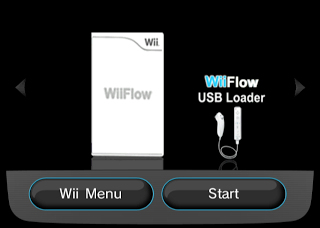
Download Wiiflow 43 E
Abstract Background: Heart rate variability analysis offers real-time quantification of autonomic disturbance after perinatal asphyxia, and may therefore aid in disease stratification and prognostication after neonatal encephalopathy (NE). Objective: To systematically review the existing literature on the accuracy of early heart rate variability (HRV) to predict brain injury and adverse neurodevelopmental outcomes after NE. Design/Methods: We systematically searched the literature published between May 1947 and May 2018.
Dec 31, 2009 Just changed /apps/wiiflow222 to just /apps/wiiflow and now it works but only with the sd card inserted. I assumed that because it was a wad it would install it to the wii instead of just forwarding it to /apps/wiiflow. UPDATE: My bad, just realised that the clue is in the title 'Wiiflow_NForwarder-WFXF-Channel.wad' D'oh! Thanks matey!
The Astonishing Power of Emotions This audiobook by Esther and Jerry Hicks, who present the teachings of the Non-Physical entity Abraham, will help listeners understand the Emotions that theyve been experiencing all their lives. Start reading The Astonishing Power of Emotions (Law of Attraction Book 4) on your Kindle in under a minute. Don't have a Kindle? Get your Kindle here, or download a FREE Kindle Reading App. Astonishing Power of Emotions: Let Your Feelings Be Your Guide by Esther Hicks - PDF free download eBook. The Astonishing Power of Emotions. Enter your mobile number or email address below and we'll send you a link to download the free Kindle App. Then you can start. Free download or read online The Astonishing Power of Emotions: Let Your Feelings Be Your Guide pdf (ePUB) book. The first edition of this novel was published in 2007, and was written by Esther Hicks. The book was published in multiple languages including English language, consists of 240 pages and is available in Paperback format. The astonishing power of emotions pdf free download.
We included all prospective and retrospective studies reporting HRV metrics, within the first 7 days of life in babies with NE, and its association with adverse outcomes (defined as evidence of brain injury on magnetic resonance imaging and/or abnormal neurodevelopment at ≥1 year of age). We extracted raw data wherever possible to calculate the prognostic indices with confidence intervals. Results: We retrieved 379 citations, 5 of which met the criteria.
One further study was excluded as it analysed an already-included cohort. The 4 studies provided data on 205 babies, 80 (39%) of whom had adverse outcomes. Prognostic accuracy was reported for 12 different HRV metrics and the area under the curve (AUC) varied between 0.79 and 0.94. The best performing metric reported in the included studies was the relative power of high-frequency band, with an AUC of 0.94. Conclusions: HRV metrics are a promising bedside tool for early prediction of brain injury and neurodevelopmental outcome in babies with NE. Due to the small number of studies available, their heterogeneity and methodological limitations, further research is needed to refine this tool so that it can be used in clinical practice.
Karger AG, Basel Introduction Neonatal encephalopathy (NE) results primarily from a presumed lack of oxygen and blood flow to the fetal brain around the time of birth and accounts for 1 million deaths worldwide every year []. Although rescue hypothermic neuroprotection improves survival and neurodevelopment outcome after NE, the early identification of babies at risk of brain injury and adverse outcomes is challenging due to the evolving clinical picture. An abnormal voltage or pattern of amplitude-integrated electroencephalography (aEEG) has been used as a bedside tool for quantifying brain injury and as an inclusion criterion for some of the cooling trials [, ]. Free download bin tere from i hate love story. More recent data suggests that aEEG does not offer an added advantage over clinical examination [] and its prognostic accuracy in cooled infants is poor [].
As autonomic disturbance is the hallmark of perinatal hypoxic injury, heart rate variability (HRV) analysis may offer a promising solution. HRV analysis quantifies variations in heartbeat intervals, offering a non-invasive measure of autonomic function, as it reflects the actions of the sympathetic and parasympathetic nervous systems. The simplest measure of HRV is determined by the standard deviation of the difference between consecutive RR intervals (SDNN), but many other measures of HRV continue to be developed [, ]. Currently, HRV analyses can include not only linear measures in time and frequency domains but also several non-linear metrics derived from complexity analysis [].